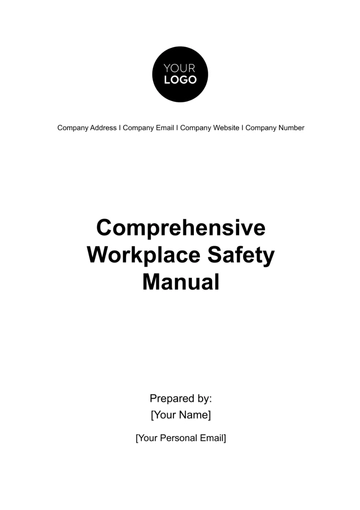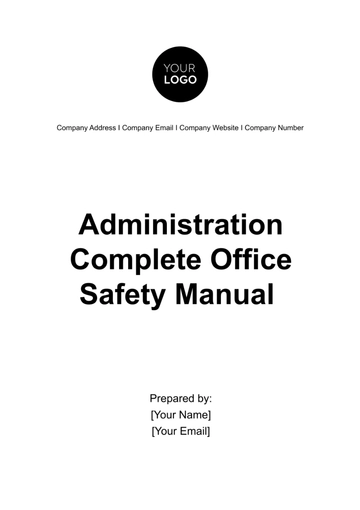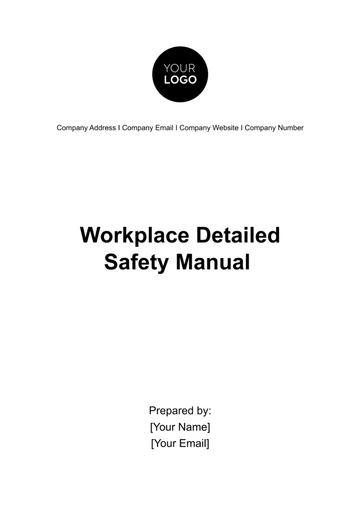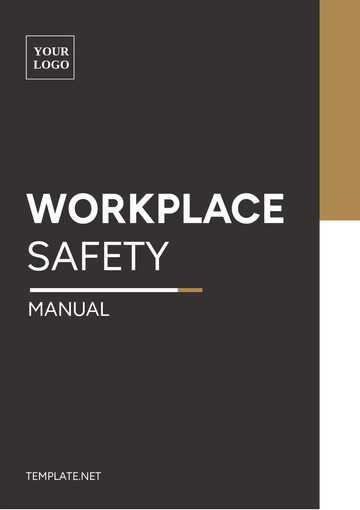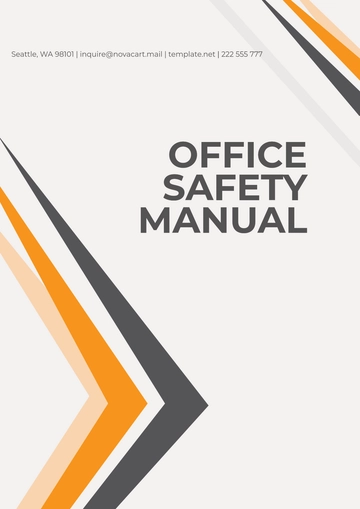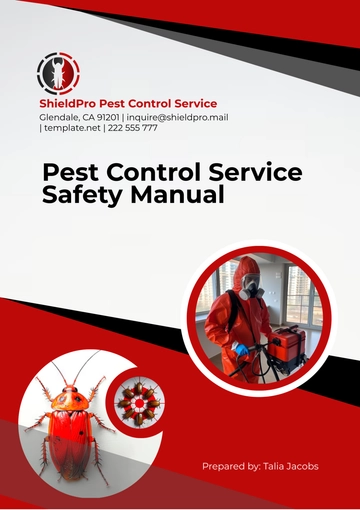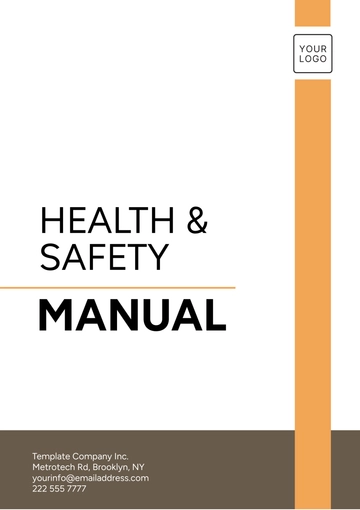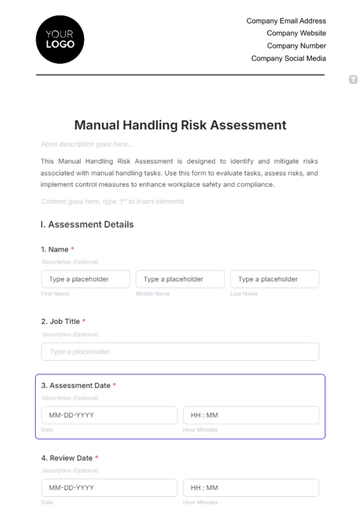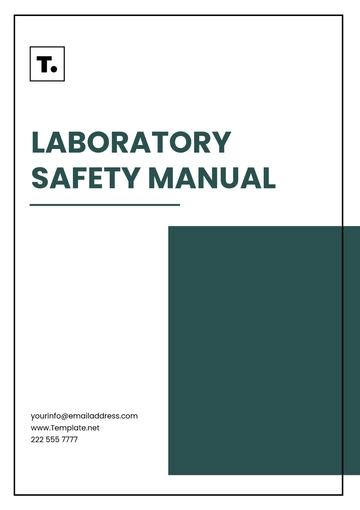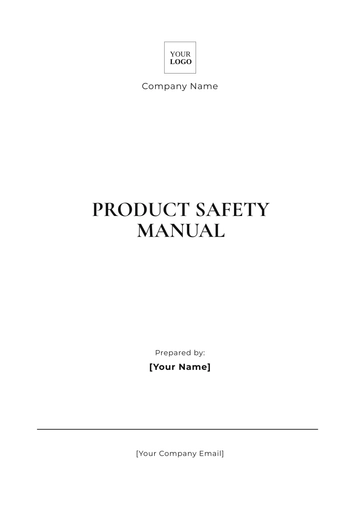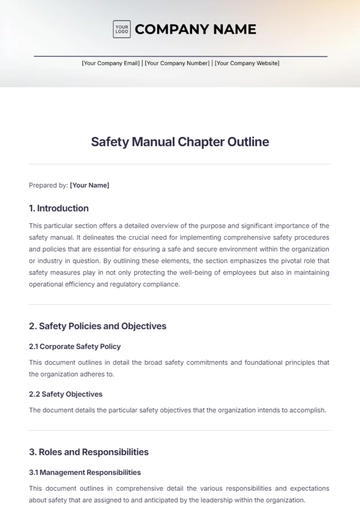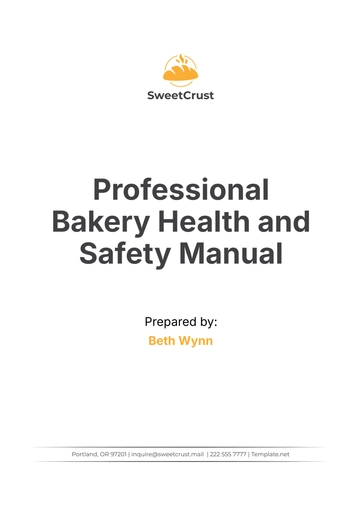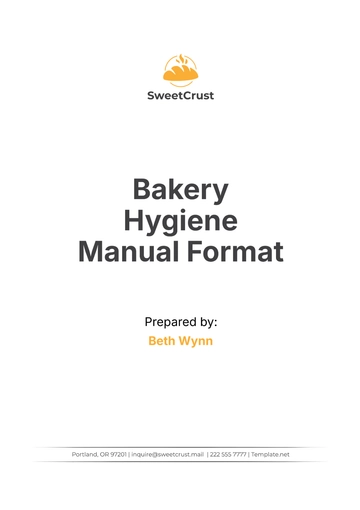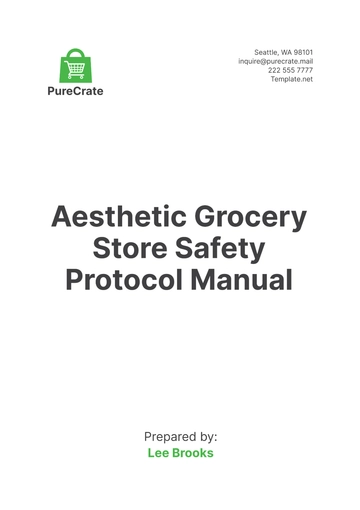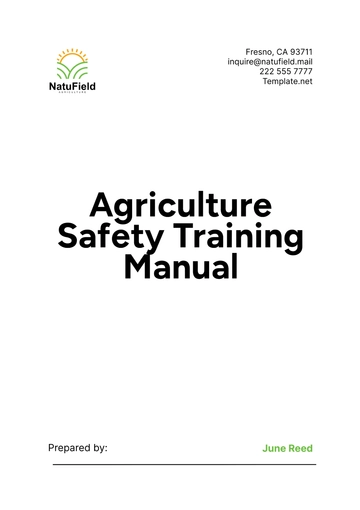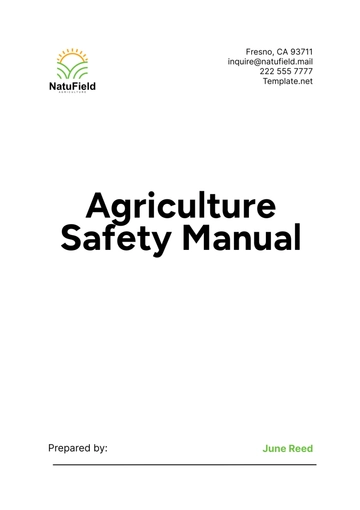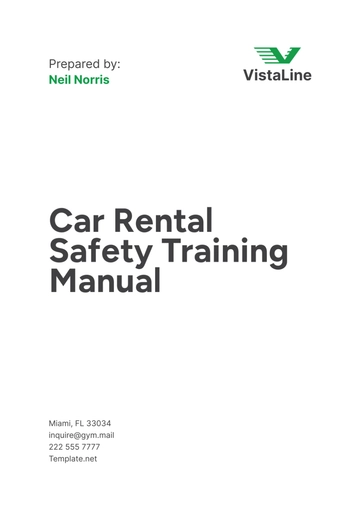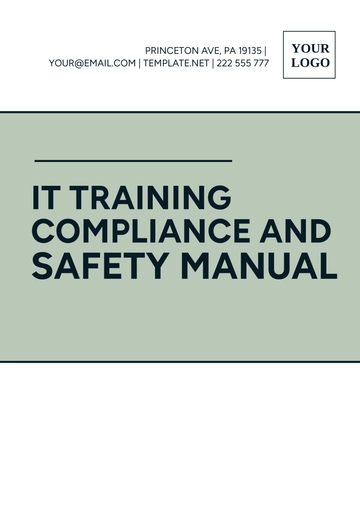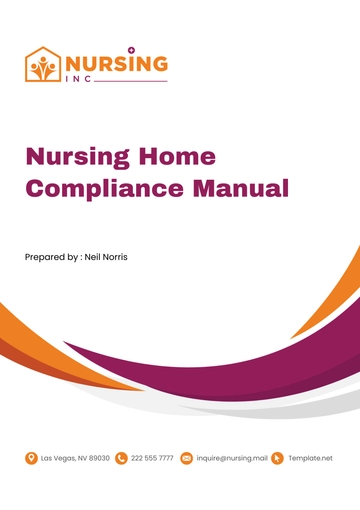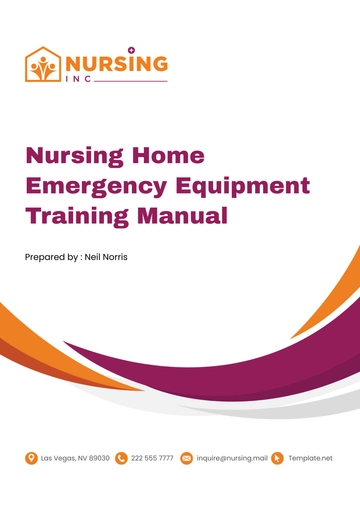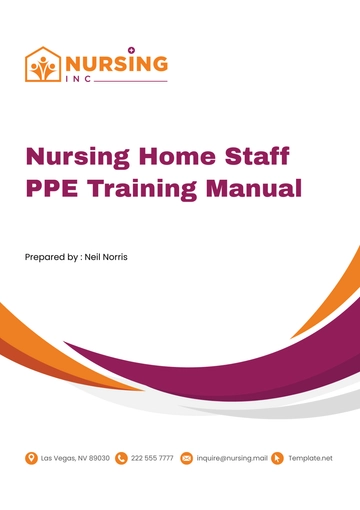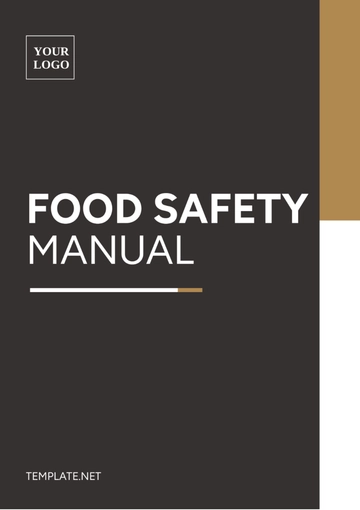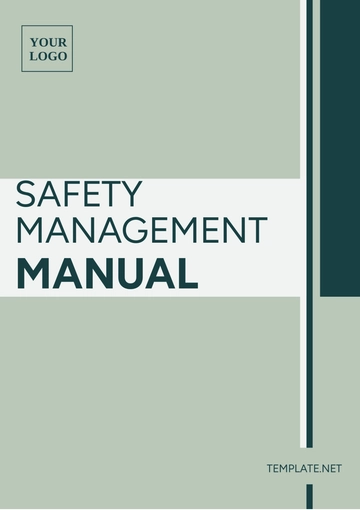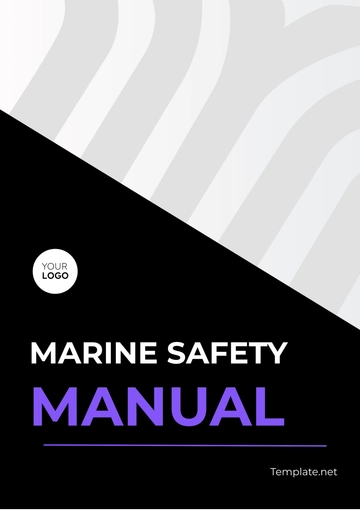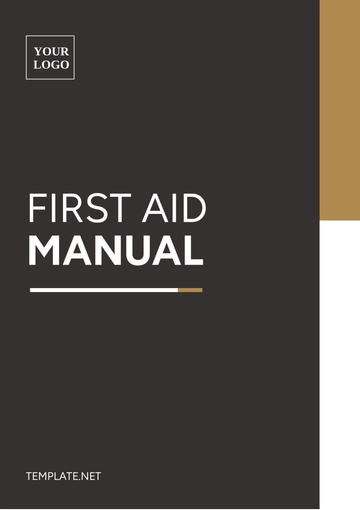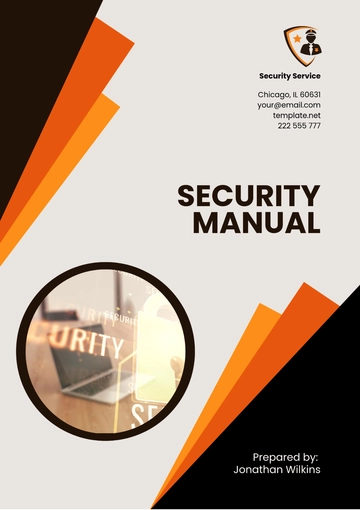Free Health & Safety Training & Awareness Manual
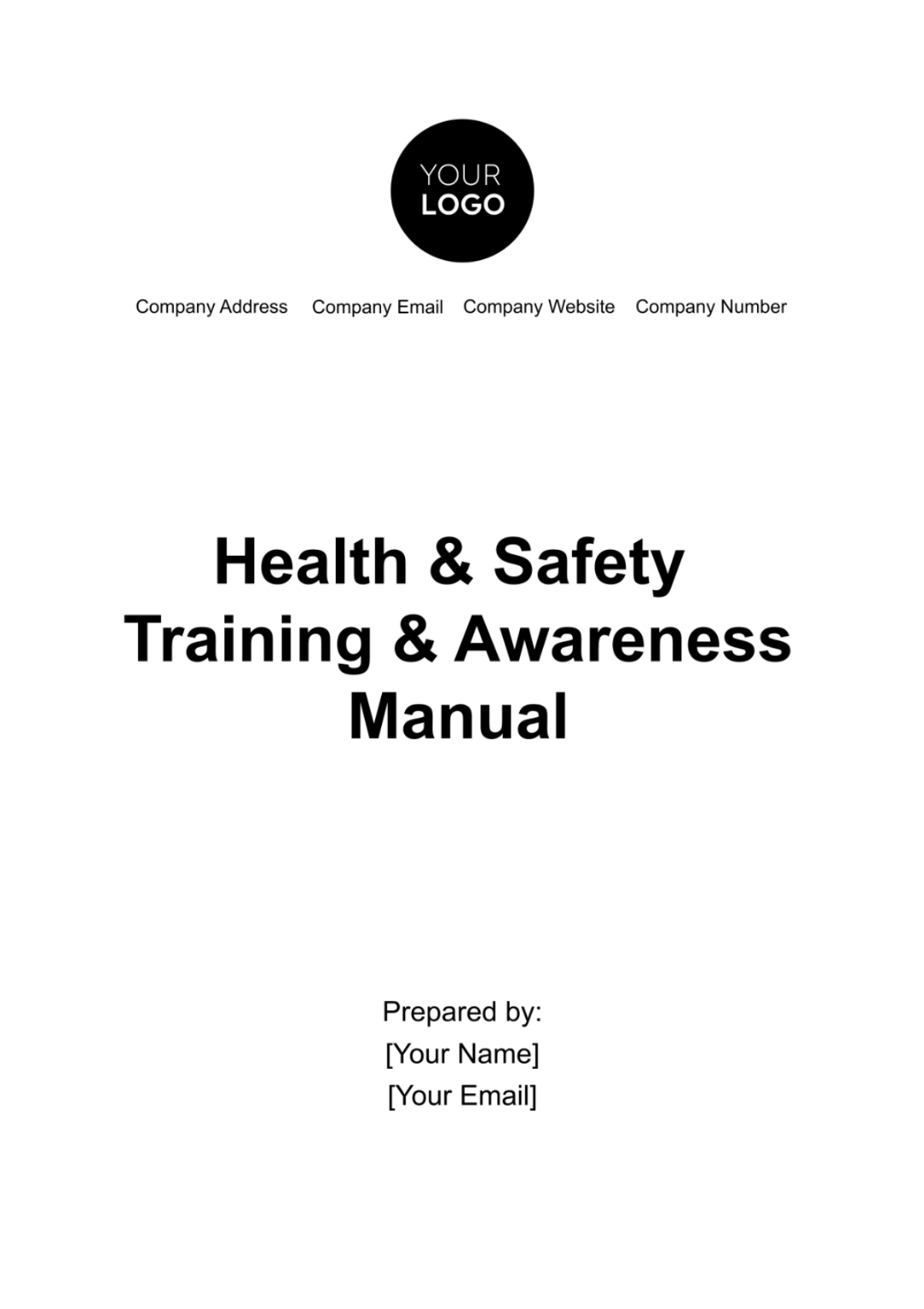
Introduction
Welcome to our Health & Safety Training & Awareness Manual. This manual serves as a comprehensive guide and reference to promote and uphold the highest standards of health and safety within our workplace. It is designed to be a valuable resource for all employees, regardless of their role or seniority, underscoring our collective commitment to a safe and healthy working environment.
Purpose and Scope
The primary purpose of this manual is to provide clear and practical information on our health and safety policies, procedures, and best practices. It encompasses a wide range of topics, from identifying potential hazards and conducting risk assessments to understanding and adhering to regulatory compliance and safety protocols. The scope of this manual extends to all aspects of our operations, ensuring that every employee is equipped with the knowledge to act safely and responsibly at work.
Importance of Training and Awareness
Health and safety training and awareness are fundamental to maintaining a secure and efficient workplace. They not only protect employees from potential hazards but also foster a culture of safety that permeates every aspect of our organization. By being well-informed and aware, employees can contribute to a safer work environment, minimize the risk of accidents and injuries, and ensure compliance with legal and organizational safety standards. This manual is a crucial tool in achieving these goals, providing essential guidance and resources to support our ongoing commitment to health and safety.
Through this manual, we aim to empower every member of our organization with the knowledge and resources needed to maintain a safe and healthy work environment. Our collective adherence to the guidelines and practices outlined herein is vital to our continued success and well-being.
Understanding Health and Safety
The importance of health and safety in the workplace cannot be overstated. It protects employees from injuries and illnesses, reduces the incidence and severity of accidents, and enhances overall employee well-being. A safe work environment also contributes to improved morale, increased productivity, and a positive organizational reputation. Furthermore, prioritizing health and safety can lead to significant cost savings by reducing medical expenses, legal fees, and lost productivity due to workplace accidents and injuries.
Basic Principles
Risk Management: Identifying, assessing, and controlling potential hazards in the workplace to prevent accidents and injuries.
Prevention Focus: Implementing strategies and practices aimed at preventing incidents before they occur, rather than reacting after the fact.
Employee Involvement: Actively involving employees in health and safety matters through training, participation in safety committees, and open communication channels.
Continuous Improvement: Regularly reviewing and improving health and safety practices to adapt to new challenges and changes in the workplace.
Emergency Preparedness: Having plans and procedures in place to respond effectively to emergencies and incidents.
Legal Requirements and Compliance
In the United States, workplace health and safety are primarily governed by the Occupational Safety and Health Administration (OSHA). Key legal requirements include:
OSHA Standards: Employers are required to comply with OSHA’s safety and health standards. These standards are designed to ensure safe and healthful working conditions and cover a range of topics, including hazardous materials, machine guarding, and workplace ergonomics.
Recordkeeping: Employers must maintain records of work-related injuries and illnesses. OSHA's Recordkeeping Rule outlines specific criteria for recording these incidents.
Employee Training: Employers are responsible for providing employees with training on the specific hazards of their job, as well as general health and safety awareness.
Right to a Safe Workplace: Employees have the right to a safe workplace and can file a confidential complaint with OSHA to have their workplace inspected.
Identifying Health and Safety Hazards
In maintaining a safe workplace, the first crucial step is to identify potential health and safety hazards. This section provides an overview of the different types of hazards present in the workplace and the various methods used to identify these hazards effectively.
Types of Hazards
Physical Hazards | Involve environmental factors that can harm the body without necessarily touching it. Examples include noise, radiation, and extreme temperatures. |
Chemical Hazards | Result from exposure to chemicals in the workplace. This includes solvents, paints, gases, and other substances that can be harmful if inhaled, ingested, or contacted. |
Biological Hazards | Arise from working with people, animals, or infectious plant materials. Examples include bacteria, viruses, and other microorganisms. |
Ergonomic Hazards | Relate to the design of a workstation, the use of tools, and the specific tasks an employee performs. Poor ergonomic practices can lead to musculoskeletal disorders. |
Psychological Hazards | Include stress, violence, and other workplace pressures that can affect mental health and well-being. |
Methods of Hazard Identification
Inspections | Regular and systematic inspections of the workplace to identify potential hazards in the environment, equipment, and processes. |
Employee Reports | Encouraging employees to report hazards they observe or experience, as they are often the first to notice potential risks. |
Job Hazard Analysis (JHA) | A systematic process that involves analyzing individual job tasks to identify hazards before they cause harm. |
Incident and Accident Reports | Reviewing past incidents and accidents to identify recurring hazards and trends. |
Risk Assessment and Control
Risk assessment and control are vital processes in the effective management of workplace health and safety. This section outlines the systematic approach to assessing risks and the strategies employed to control and mitigate these risks, ensuring a safer work environment.
Assessment Process
Identifying Hazards: The first step involves recognizing potential hazards in the workplace, which could harm employees, contractors, visitors, or the public.
Evaluating Risks: Once hazards are identified, evaluate the likelihood and severity of harm they could cause. This involves considering existing control measures and determining the level of risk.
Prioritizing Risks: Based on the evaluation, prioritize the risks, focusing first on those that pose the greatest threat in terms of likelihood and severity.
Developing Control Measures: Develop appropriate strategies to eliminate or reduce the high-priority risks to acceptable levels.
Implementing Controls: Put the control measures into practice. This may involve changes to equipment, materials, processes, or procedures.
Monitoring and Review: Regularly review the risk assessment and control measures to ensure they remain effective and make adjustments as necessary, especially when changes in the workplace occur.
Mitigation Strategies
Elimination: Removing the hazard entirely from the workplace, which is the most effective control measure.
Substitution: Replacing a hazardous material or process with a less hazardous one.
Engineering Controls: Making physical modifications to facilities, equipment, or processes to reduce exposure to the hazard.
Administrative Controls: Implementing changes in work policies or procedures, such as training, job rotation, and scheduling to reduce exposure to hazards.
Personal Protective Equipment (PPE): Using protective gear, such as gloves, helmets, earplugs, etc., as a last resort when hazards cannot be adequately controlled by other means.
Health and Safety Policies
Our health and safety policies are designed to protect employees, contractors, and visitors from occupational hazards and to ensure a safe working environment. Key elements of our policies include:
Commitment to Safety: A declaration of our commitment to providing a safe and healthy work environment, free from recognized hazards.
Compliance with Laws and Regulations: Adherence to all relevant local, state, and federal health and safety laws and regulations.
Hazard Identification and Risk Management: Procedures for identifying, assessing, and managing workplace hazards and risks.
Training and Education: Provision of regular training and education programs to ensure employees are aware of health and safety risks and know how to manage them.
Incident Reporting and Investigation: Policies outlining the procedures for reporting and investigating workplace incidents and accidents.
Emergency Procedures: Detailed emergency response plans for various scenarios, including fires, medical emergencies, and natural disasters.
Continuous Improvement: Ongoing evaluation and improvement of health and safety practices.
Roles and Responsibilities
Management |
|
Employees |
|
Health and Safety Officers |
|
Safety Procedures and Guidelines
Ensuring safety in the workplace requires specific procedures and guidelines tailored to various tasks and areas. This section outlines these procedures, including detailed steps for safe evacuation, first aid, and fire safety, to equip our employees with the knowledge to act safely and effectively in different situations.
Procedures for Safe Evacuation
Know the sound of the evacuation alarm and respond immediately.
Evacuate the building in a calm and orderly manner via the nearest safe exit.
Avoid elevators and use stairs during evacuation.
Proceed to designated assembly points outside the building.
Check-in with your supervisor or designated safety officer at the assembly point.
Do not re-enter the building until it is declared safe by the appropriate authorities.
First Aid Procedures
Quickly assess the situation for safety before providing aid.
If necessary, call for professional medical assistance.
Administer basic first aid if trained. This may include applying bandages or CPR.
Keep the injured person comfortable and reassure them help is on the way.
Report the incident to the appropriate officer for follow-up and documentation.
Fire Safety Procedures
Familiarize yourself with fire alarms and emergency exits in your area.
On hearing a fire alarm, evacuate immediately as per the evacuation plan.
Close doors behind you to slow the spread of fire and smoke.
Use fire extinguishers only if trained and it is safe to do so.
Stay low to the ground to avoid smoke if present.
Proceed to the designated assembly point and do not re-enter the building.
Training Programs
Our organization recognizes the importance of ongoing training in maintaining a safe and healthy work environment. This section provides an overview of the available health and safety training programs, including their schedules and requirements, ensuring all employees are adequately trained and informed.
Training Program | Frequency | Duration | Target Audience |
General Workplace Safety | Annually | 2 hours | All new employees |
Ergonomics and Workstation Setup | Biennially | 1 hour | Office staff |
Handling Hazardous Materials | Annually | 3 hours | Maintenance staff, lab technicians |
Fire Safety and Evacuation Training | Annually | 2 hours | All employees |
First Aid and CPR | Every two years | 4 hours | Volunteer first responders |
Health and Safety for Managers | Annually | 3 hours | Managers and supervisors |
Reporting and Communication
Effective reporting and communication are foundational to maintaining a safe work environment. This section outlines the established procedures for reporting health and safety incidents or concerns, as well as the communication channels available for discussing health and safety issues.
Reporting Procedures
Immediate Reporting: Employees must report any safety incidents or concerns immediately to their supervisor or the designated health and safety officer.
Incident Report Forms: Standardized forms should be filled out for any incident, detailing the nature of the incident, any injuries or damages, and potential causes.
Anonymity Option: For those who prefer to report anonymously, there should be an option available, such as a suggestion box or an anonymous online form.
Follow-Up: Each report will be followed up with an investigation by the health and safety team to determine corrective actions and prevent future occurrences.
Communication Channels
Regular Meetings: Regular health and safety meetings for discussing ongoing issues, new policies, or training updates.
Health and Safety Bulletin Board: A physical or digital bulletin board for posting safety reminders, updates, and information.
Newsletters and Emails: Regular newsletters or emails to keep employees informed about health and safety matters
Intranet Portal: A dedicated section on the company intranet for health and safety resources, policies, and updates.
Health and Safety Procedures
Access to the right resources is essential for effective health and safety management in the workplace. This section provides a comprehensive list of both internal and external resources available, categorized for ease of access and clarity.
Resource Category | Available Resources | Location/Contact Information |
First Aid Kits | Standard first aid kits | Located in each department/common areas |
Safety Equipment | Protective gear (gloves, helmets, goggles, etc.) | Stored in the equipment room/onsite at specific workstations |
Emergency Contacts | List of emergency contact numbers | Posted in common areas and on the intranet |
Mental Health Resources | Counseling services, stress management guides | Details available through HR and the wellness program |
- 100% Customizable, free editor
- Access 1 Million+ Templates, photo’s & graphics
- Download or share as a template
- Click and replace photos, graphics, text, backgrounds
- Resize, crop, AI write & more
- Access advanced editor
Introducing Template.net's Health & Safety Training & Awareness Manual Template, an essential resource for fostering a culture of safety in the workplace. Fully customizable and editable in our Ai Editor Tool, this template enables businesses to develop comprehensive training programs tailored to their specific needs. Ensure compliance and enhance employee awareness with ease using our user-friendly platform.
